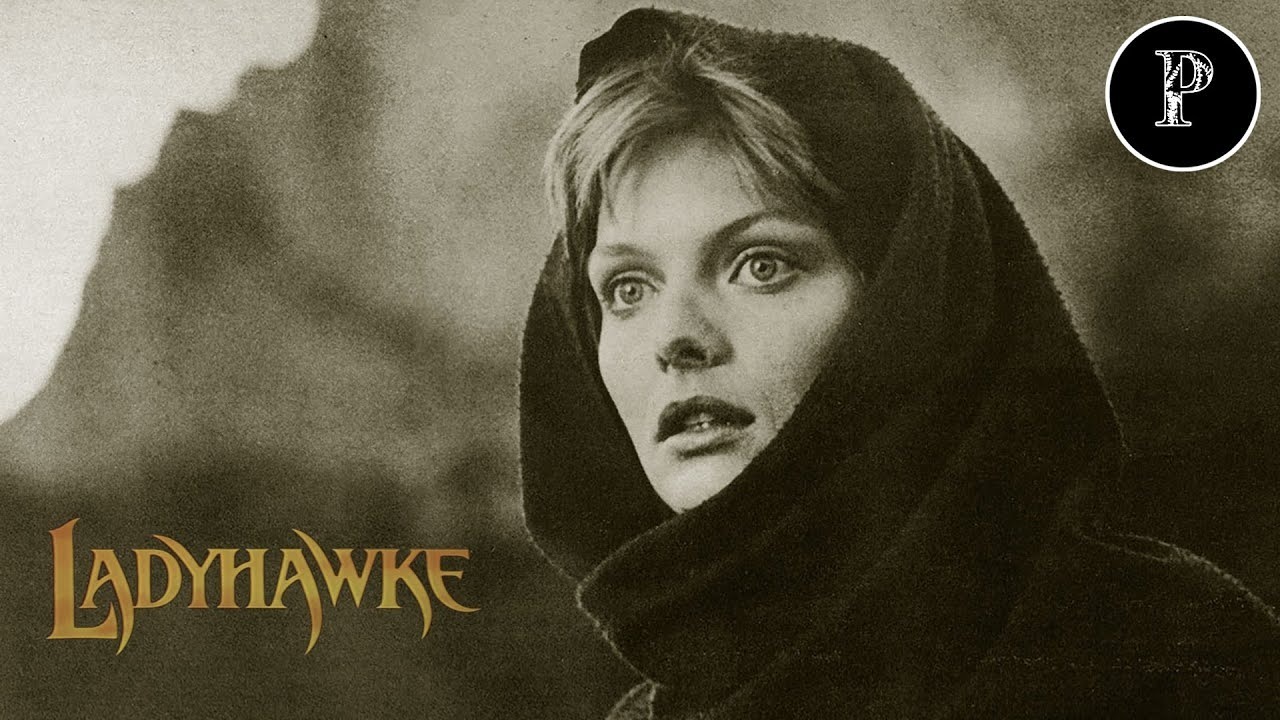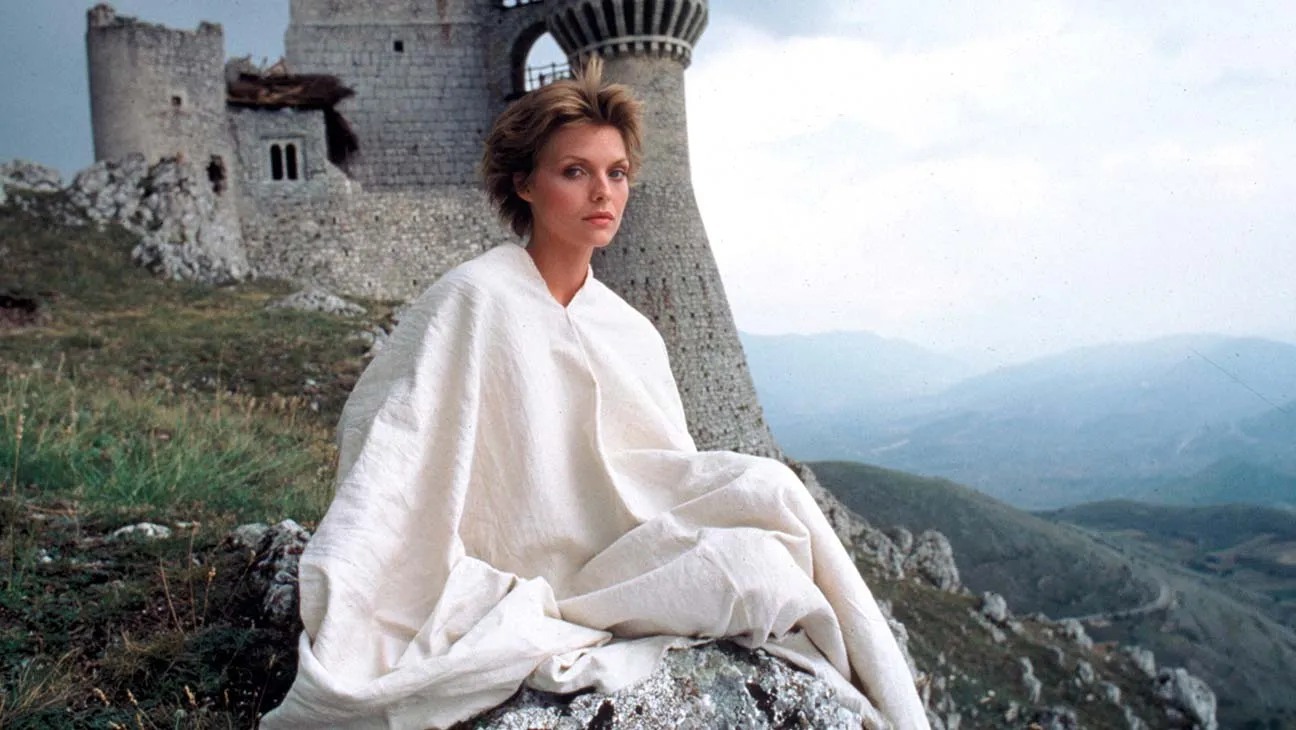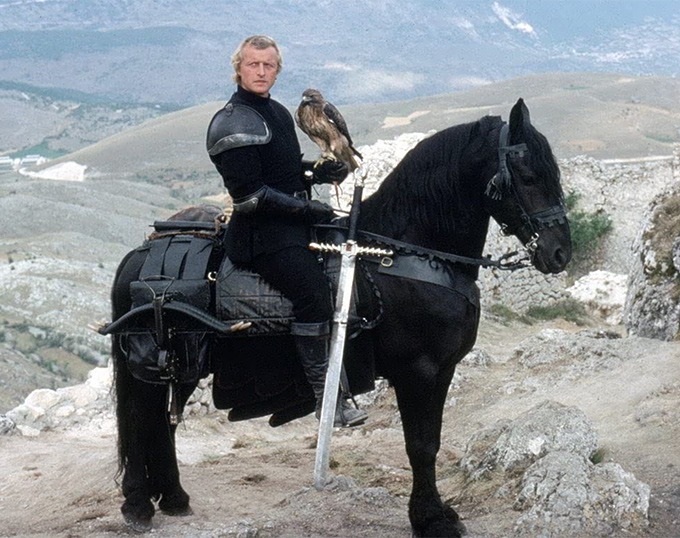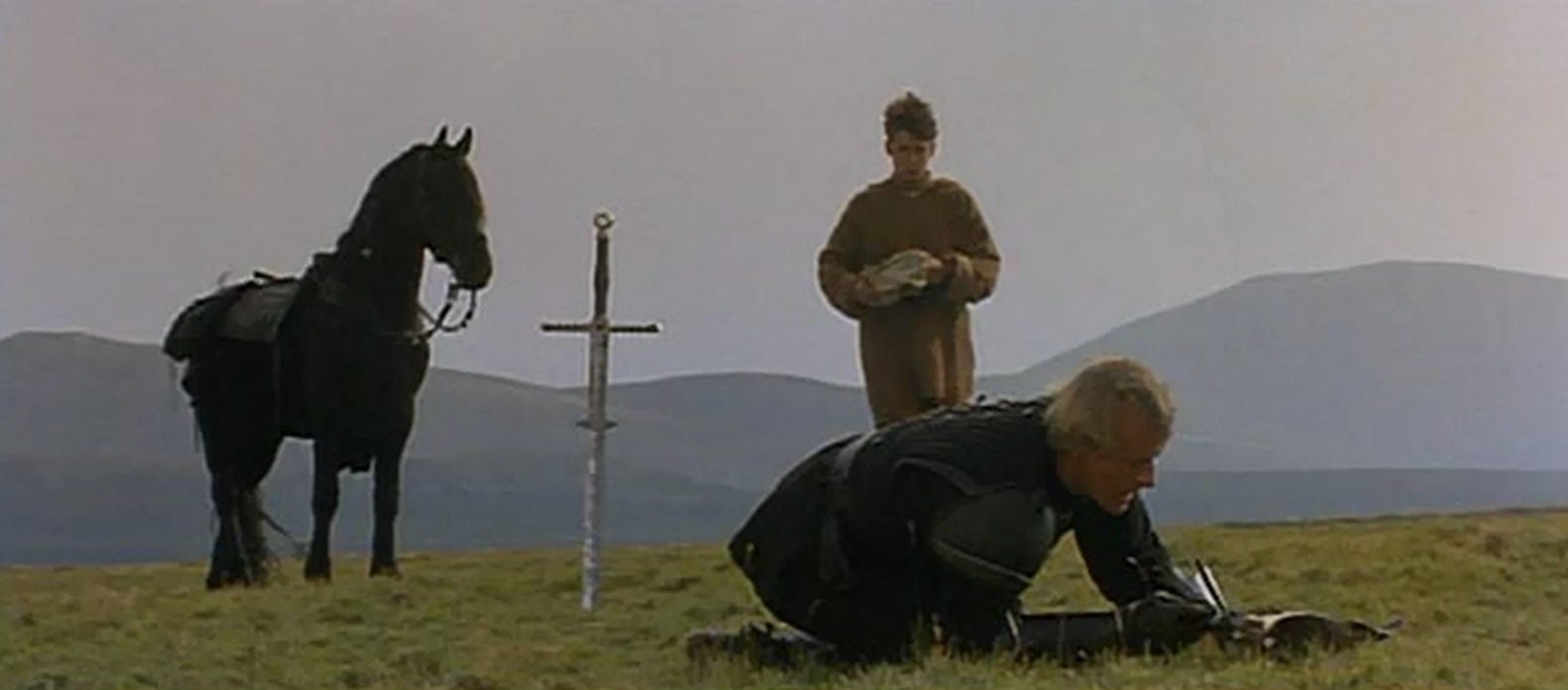“Ladyhawke,” directed by Richard Donner and released in 1985, is a timeless fantasy film that weaves together themes of love, redemption, and the supernatural.

Ladyhawke, directed by Richard Donner and released in 1985, is a timeless fantasy film that masterfully weaves together themes of love, redemption, and the supernatural. Set in a medieval world where magic and faith collide, the film tells the story of a tragic romance cursed by dark forces, and the quest to break that curse.

The film follows the journey of two lovers, Etienne Navarre (played by Rutger Hauer) and Isabeau d’Anjou (played by Michelle Pfeiffer), who are doomed to be forever apart by a powerful curse. By day, Isabeau is transformed into a hawk, and by night, Navarre becomes a wolf. Their curse, inflicted by the jealous and evil Bishop of Aquila (John Wood), ensures that they can never be together in their human forms.
Enter Phillipe Gaston, also known as “Mouse” (played by Matthew Broderick), a witty and resourceful thief who escapes from the dungeons of Aquila and inadvertently becomes entangled in the lovers’ quest. With Phillipe’s help, Navarre and Isabeau seek to find a way to break the curse, which can only be undone by confronting the Bishop during a rare solar eclipse known as “the day without a night.”

Ladyhawke is a film that stands out for its enchanting blend of romance, adventure, and fantasy. Richard Donner’s direction captures the sweeping beauty of the medieval landscape, with breathtaking cinematography that showcases the Italian countryside, castles, and forests where the story unfolds. The film’s visual style, combined with its evocative score composed by Andrew Powell and performed by The Alan Parsons Project, creates a unique atmosphere that is both ethereal and epic.
The performances of the main cast are central to the film’s enduring appeal. Rutger Hauer brings a noble intensity to the role of Navarre, portraying a man driven by love and honor, yet haunted by the curse that keeps him apart from Isabeau. Michelle Pfeiffer, with her ethereal beauty and grace, embodies the role of Isabeau, a woman of strength and resilience, trapped in a tragic fate. Matthew Broderick provides a charming and humorous contrast as Phillipe, whose cleverness and quick wit add levity to the story while also serving as the emotional anchor for the audience.

The film’s themes of love and redemption are deeply intertwined with the supernatural elements of the story. The curse that binds Navarre and Isabeau serves as a powerful metaphor for the barriers that love can sometimes face, whether imposed by external forces or internal struggles. The film’s resolution, which hinges on the lovers’ faith and determination, is a poignant reminder of the enduring power of love to overcome even the darkest of curses.
Ladyhawke also explores themes of loyalty and sacrifice, as Phillipe, despite his initial reluctance, becomes an integral part of Navarre and Isabeau’s quest, risking his life to help them achieve their goal. The film’s portrayal of friendship and courage in the face of overwhelming odds adds depth to its narrative, making it more than just a simple fantasy romance.

In conclusion, Ladyhawke is a cinematic gem that has captivated audiences for decades with its timeless story, captivating performances, and beautiful visuals. Richard Donner’s deft direction, combined with the film’s memorable characters and sweeping romanticism, ensures that it remains a beloved classic in the fantasy genre. Its themes of love, redemption, and the supernatural continue to resonate, making Ladyhawke a film that stands the test of time.











